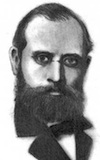Charles Paxton Zaner
Charles Paxton Zaner | |
|---|---|
 | |
| Born | February 15, 1864 Bloomsburg, Pennsylvania, United States |
| Died | December 1, 1918 (aged 54) Mifflin, Ohio, United States |
| Occupation | Master Penman and Educator |
| Known for | Business and Ornamental Penmanship, Editor, Education |
| Signature | |
 | |
Charles Paxton Zaner (February 15, 1864 – December 1, 1918) was an American calligrapher, pen artist, and teacher of penmanship.
Zaner was born near Bloomsburg, Pennsylvania. He attended G. W. Michael's Pen Art Hall course in penmanship in Oberlin, Ohio, in 1882. By 1888, Zaner had been a teacher of penmanship at two Ohio colleges, and after the second had closed, he decided to open his own college where he could teach the art. Zaner's school was originally known as Zanerian Art College and was a joint venture with . In 1891, Zaner sold a share of the school. Kelchner left before the end of the year, resulting with Zaner and Bloser becoming equal partners. This company eventually became what is now the Zaner-Bloser Company and operated[citation needed] the Zanerian College of Penmanship in Columbus, Ohio.[1]
Zaner died on the evening of December 1, 1918, in Mifflin, Ohio, when the car in which he was riding was struck by an oncoming train.
Penmanship[]
Movement and Form[]

Zaner examined the idea of movement creating the form of letters written in the cursive hand using the muscular arm method, prevalent in the United States from the late 19th century (e.g. Palmer Method). He considered the hinge action of the forearm as the central energy of movement and that its relation to the direction of writing, or page angle, could affect letter form and the effort required. By changing from a page angle which placed letter down strokes on a line towards the center of the body, as other educators advised, Zaner offered a means to link muscle effort with balanced (medium), condensed (compact style), or extended (running hand) letter forms.[2]
Hand Action[]
In handwriting courses such as the Palmer Method the fingers used to support and steady the hand on the page for arm movement were fixed in relation to the pen, for example, “the nails of the third and fourth fingers should rest lightly on the paper, and should follow the course of the pen in every direction”.[3]
Zaner's lessons in business and ornamental penmanship attempted to describe how professional writers of these styles used the 'rest' fingers to control movement. For writing lower case letters, Zaner explained the technique of letting the little finger slide to right in making up strokes, but to rest or drag for down strokes in order to improve control of the arm movement. This required the joints of the rest fingers to act on the down strokes, independent of those holding the pen, which Zaner termed as hand action.[4][5]
Professional Pen Work[]
In the field of professional penmanship as a fine art, Zaner produced educational material and instruction, going beyond the copybook as in his lessons for school and commercial handwriting. His capital letters for Ornamental Penmanship appearing with comments by in The Educator showed how basic forms could be extended by flourishes with "balance, symmetry, and grace".[6]
Graphic Arts[]
Zaner also provided instruction in drawing and illustration; and, as with penmanship, he encouraged individuality and discovery rather than the rigid following of a prescribed method.
Do not think the technique employed is the only method — “there are others” — as many as there are artists, so do not follow, but invent.[7]: 23
Publications[]
- Lessons in Business Penmanship (1892-3)[4]
- Lessons in Business Penmanship (1894-5)[8]
- Lessons in Professional Writing (1895)[5]
- The Line of Direction in Writing (1896)[2]
- The Road to Sketching from Nature (1898)[7]
- The Arm Movement Method of Rapid Writing (1904)[9]
- Lessons In Ornamental Penmanship (1909)[10]
References[]
- ^ "Zanerian College Certificates". www.zanerian.com. Retrieved 2021-03-12.
- ^ Jump up to: a b Zaner, C. P. (June 1896). "The Line of Direction in Writing (or) The Angle of the Forearm and Its Modifying Influences on Movement and Form". Penman's Art Journal. 20 (6): 114–115. Retrieved 2 February 2019.
- ^ Palmer, A. N. (1884). "Lessons in Writing". The Western Penman. 1 (6). Retrieved 4 December 2019.
- ^ Jump up to: a b Zaner, C. P. (1892–1893). "Lessons in Business Penmanship". Penman's Art Journal. vols. 16-17. Retrieved 4 December 2019.
- ^ Jump up to: a b Zaner, C. P. (1895). "Lessons in Professional Writing". Penman's Art Journal. vols. 19-20. Retrieved 28 November 2019.
- ^ Lupfer, E. A. (1933–1934). "Fundamental Letter Forms A to Z - Pen Work by C. P. Zaner". The Educator. vols. 38-39. Retrieved 13 December 2019.
- ^ Jump up to: a b Zaner, C. P. (1898). The Road to Sketching from Nature. Zanerian Art College. Retrieved 23 June 2020.
- ^ Zaner, C. P. (1894–1895). "Lessons in Business Penmanship". Art Education – Journal of the National Art Education Association. 1. Retrieved 4 December 2019.
- ^ Zaner, C. P. (1909). The Arm Movement Method of Rapid Writing. Retrieved 13 December 2019.
- ^ Zaner, C. P. (1909). Lessons in Ornamental Penmanship. Retrieved 28 November 2019.
- Speaking Solutions: Penmanship's Storied Past and the Technological Roots of Its Revival, By Karl Barksdale
- Biography by Michael Sull
- The New Zanerian Alphabets, Charles Paxton Zaner, 1900 Scanned reproduction of 1900 book by Zaner.
- William E. Henning (2006). ELEGANT HAND, THE GOLDEN AGE OF AMERICAN PENMANSHIP & CALLIGRAPHY. Oak Knoll Press. ASIN B000TZR6P8., including illustrations of Zaner's calligraphy.
External links[]
- Penmanship
- 1864 births
- 1918 deaths
- Railway accident deaths in the United States
- Artists from Pennsylvania
- 19th-century American businesspeople